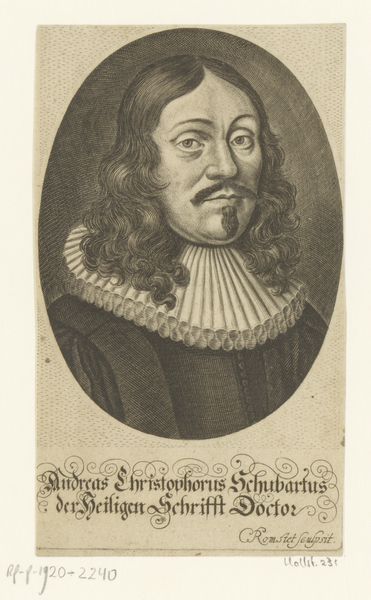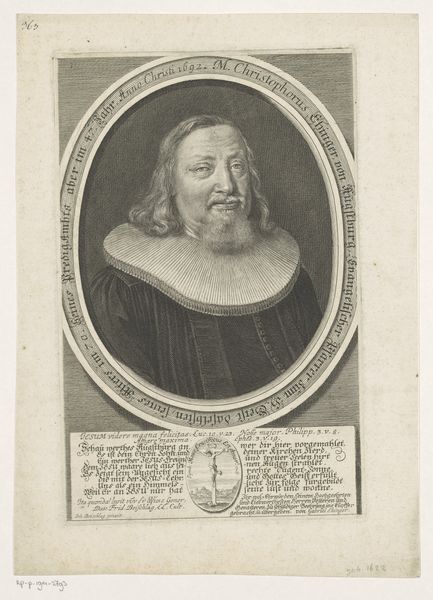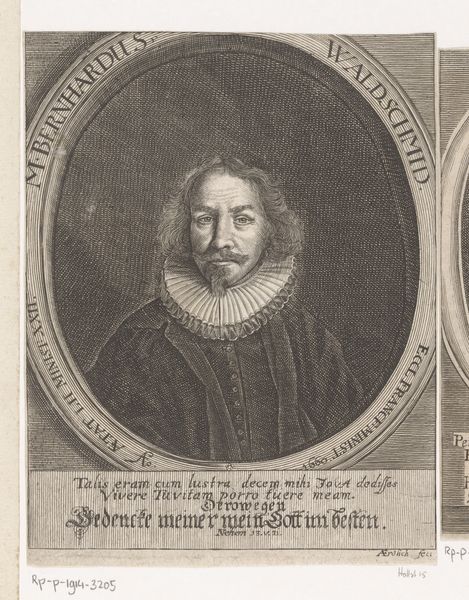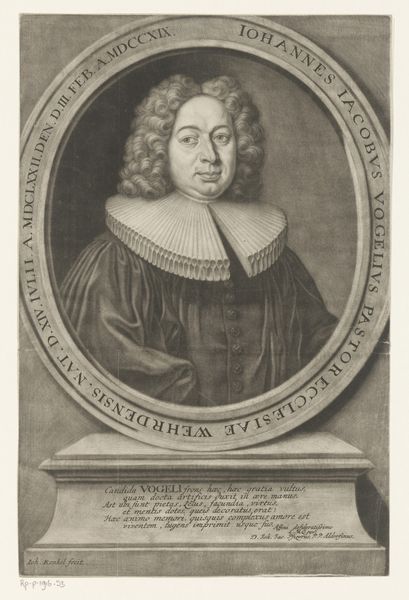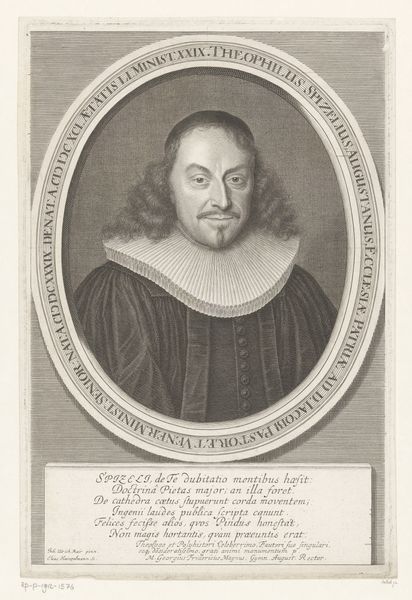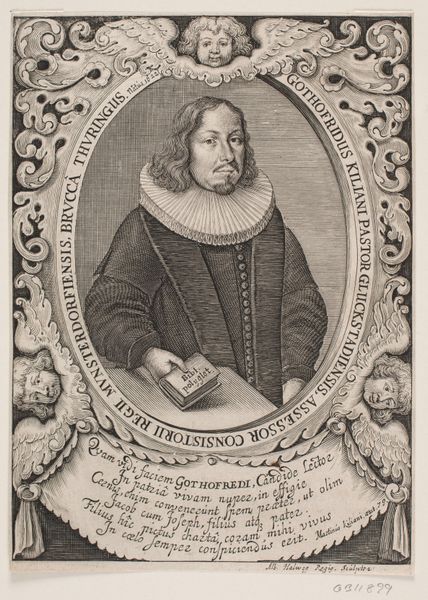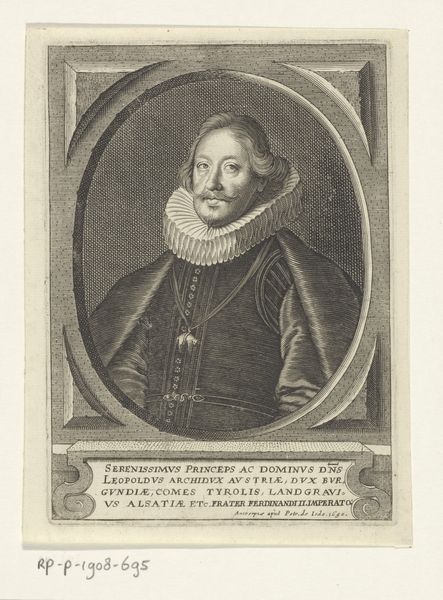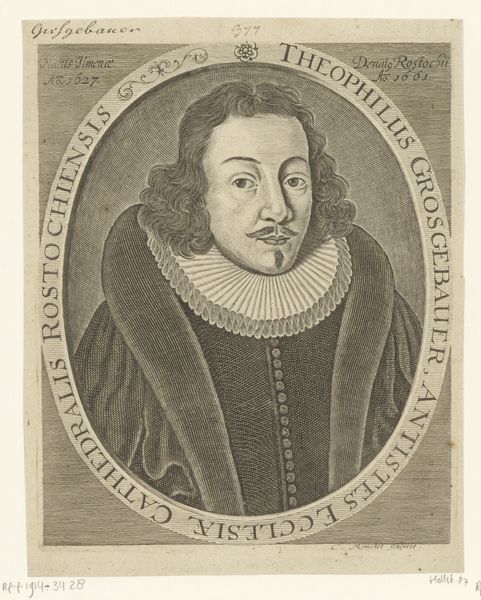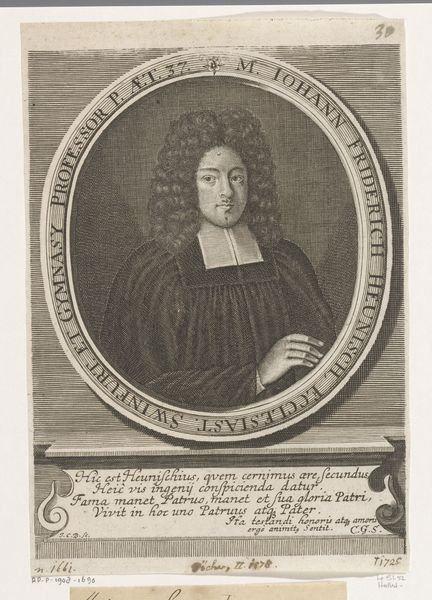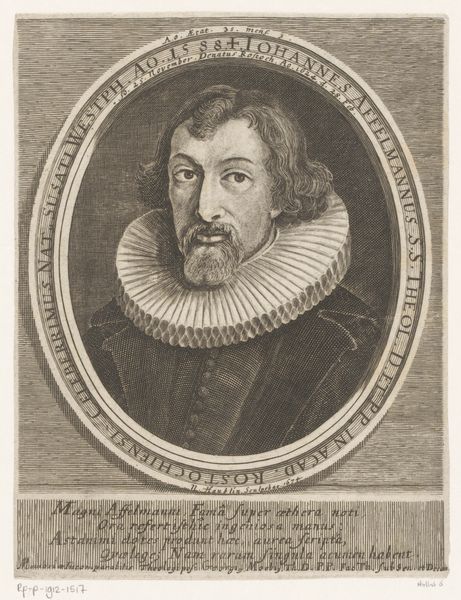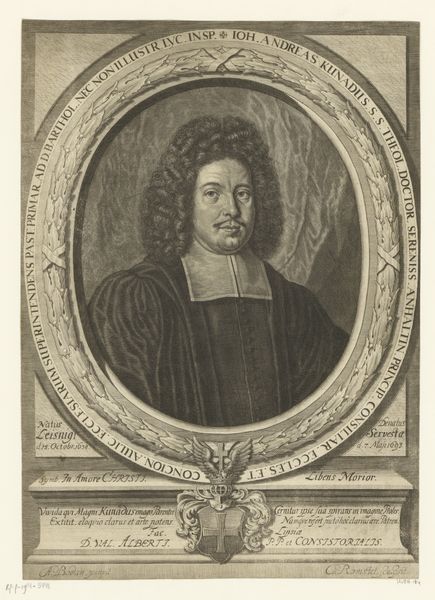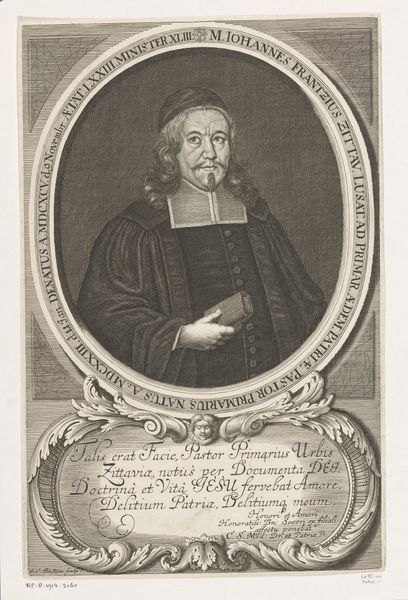
print, engraving
#
portrait
#
baroque
# print
#
old engraving style
#
engraving
Dimensions: height 178 mm, width 131 mm
Copyright: Rijks Museum: Open Domain
Editor: So, this engraving from 1685, "Portret van Johann Christoph Eckenberger op 41-jarige leeftijd" by Johann Caspar Gutwein, has such a formal, almost austere feeling to it. I’m struck by how he’s presented within this contained oval frame. What's the historical context influencing this piece, especially considering its public display? Curator: Good question! This portrait needs to be seen within the context of the rise of Protestantism and the visual culture that accompanied it. Engravings like this served an important public role: spreading images of prominent figures, solidifying their authority. What does the sitter’s attire and accoutrements suggest about his status and role in society? Editor: The large ruffled collar and formal attire signal status, and he's holding what appears to be a book – perhaps religious texts? I'm thinking this ties into him being a minister, per the inscription? Curator: Exactly! Prints were reproducible and helped construct and disseminate images of power and piety, creating visual markers of social identity. They were critical in shaping public perception of religious figures and movements during this period. How might access to such images impact public discourse and belief? Editor: I suppose these prints democratized image dissemination, so that more people could access his image and potentially learn about the minister's ideas. This reminds me how strategic representation can be in solidifying religious and political power. I had no idea it could have been such a powerful tool! Curator: Precisely! Looking at this portrait, we see a snapshot of the political role of art itself in the late 17th century. Editor: I’ll never look at an old engraving the same way again!
Comments
No comments
Be the first to comment and join the conversation on the ultimate creative platform.
